Top HR Trends for 2025: What Every HR Professional Needs to Know
Dino Cecunjanin • 2025-01-02
Discover the top HR trends for 2025, from AI-driven recruitment to employee well-being initiatives, and learn how to stay ahead in the evolving workplace
The workplace is evolving faster than ever, and HR professionals are at the forefront of this transformation. As we step into 2025, staying ahead of the curve is no longer optional—it’s essential. From AI-powered tools to a renewed focus on employee well-being, the HR landscape is shifting in ways that demand attention. In this blog post, we’ll explore the top HR trends for 2025 and provide actionable insights to help you navigate these changes with confidence.
AI and Automation in HR
Artificial Intelligence (AI) is no longer a futuristic concept—it’s here, and it’s transforming HR processes. In 2025, expect AI to play an even bigger role in recruitment, onboarding, and performance management.
- Recruitment: AI-powered tools are streamlining resume screening, identifying top candidates, and even conducting initial interviews. According to a 2024 Gartner report, 60% of organizations now use AI in their hiring processes, reducing time-to-hire by 30%. Companies like Unilever have successfully implemented AI-driven recruitment tools, cutting hiring times in half while improving candidate quality.
- Onboarding: Chatbots and virtual assistants are making onboarding smoother by answering employee questions and guiding them through paperwork. For example, IBM’s AI-powered onboarding system has reduced new hire setup time by 40%.
- Performance Management: AI is enabling continuous feedback and personalized development plans, moving away from traditional annual reviews. Tools like Leapsome and 15Five are helping managers provide real-time feedback and track employee progress.
Pro Tip: Invest in AI tools that align with your organization’s goals, but remember—technology should augment, not replace, the human touch. People are still people so even with all of the available and developing tech, we should always treat them as such.
AI isn’t just about automating recruitment, onboarding, or performance management—it’s about enhancing the entire HR ecosystem. Using tools like these helps automate repetitive tasks, enhance decision-making, and free up HR professionals to focus on people-driven strategies. Here are some AI-driven tools that HR teams can leverage in 2025:
- Leapsome: AI-powered employee engagement, learning, and performance management platform.
- Guidde: AI-driven documentation and process automation tool, perfect for onboarding and internal knowledge sharing.
- Napkin: Helps teams capture and organize ideas visually, great for brainstorming talent strategies.
- Eightfold AI: Talent intelligence platform that helps with hiring, internal mobility, and workforce planning.
- Textio: AI-powered augmented writing tool that helps craft inclusive and engaging job descriptions.
Employee Well-Being as a Priority
Employee well-being has moved from a “nice-to-have” to a business imperative. In 2025, companies are doubling down on mental health, financial wellness, and holistic benefits to support their workforce.
- Mental Health: With burnout rates on the rise, organizations are offering counseling services, mental health days, and stress management programs. A 2024 McKinsey study found that companies with robust mental health initiatives saw a 20% increase in employee productivity. For example, Google’s “Blue Dot” program connects employees with mental health resources and peer support networks.
- Financial Wellness: From student loan repayment assistance to retirement planning tools, financial wellness programs are becoming a key differentiator in attracting and retaining talent. A PwC survey revealed that 72% of employees feel stressed about their finances, and companies like Fidelity are leading the way with comprehensive financial wellness programs.
- Holistic Benefits: Think beyond traditional benefits—onsite wellness programs, flexible work hours, and even pet insurance are gaining traction. Companies like Salesforce offer wellness reimbursements for gym memberships, meditation apps, and even home office upgrades.
Pro Tip: Conduct regular employee surveys to understand what well-being initiatives resonate most with your workforce.
Employee well-being is directly tied to company culture, and organizations that integrate well-being into their core values see higher retention and engagement. When well-being is embedded into the company culture—not just a perk—it increases engagement, reduces turnover, and strengthens employer branding.
So what can you do?
Here are some examples of implementing new strategies and cultural practices:
- Well-Being as a KPI:Treat well-being like a business metric—track it through employee net promoter scores (eNPS), absenteeism rates, and productivity measures.
- Peer-Led Mental Health Initiatives: Instead of top-down wellness programs, empower employee-led well-being committees to drive initiatives.
- Workload Transparency & Burnout Prevention: Use AI-driven workload balancing tools like Clockwise to prevent overloading employees.
- Financial Wellness Education: More companies are offering money coaching and financial literacy workshops—not just 401(k) plans.
Fun Fact: Patagonia integrates mental well-being into performance reviews, checking in on stress levels just as much as KPIs.
Hybrid Work Evolution
The hybrid work model isn’t going anywhere—it’s evolving. In 2025, companies are refining their hybrid policies to strike the perfect balance between flexibility and collaboration. A 2024 Harvard Business Review study found that companies with structured hybrid work models saw a 22% increase in productivity and a 35% decrease in voluntary turnover.
- Structured Flexibility: Employees want clarity on when and where they’re expected to work. For example, companies like Microsoft have implemented “anchor days,” where teams come into the office for collaboration and team-building activities.
- Tech-Enabled Collaboration: Tools like Microsoft Teams and Slack are becoming more sophisticated, enabling seamless communication across hybrid teams. A 2024 report by Owl Labs found that 78% of employees feel more productive in a hybrid work environment.
- Inclusive Policies: Ensure remote employees have equal access to opportunities, resources, and recognition. Companies like GitLab have set the standard for remote-first policies, offering stipends for home office setups and virtual team-building activities.
Pro Tip: Regularly revisit your hybrid work policies to ensure they meet the needs of your workforce and align with your organizational goals.
As hybrid work becomes the default for many organizations, policies must evolve to balance flexibility, fairness, and productivity. The key to a successful hybrid model is setting clear expectations, providing support, and ensuring equity between remote and in-office employees.
Consider updating your policies to include:
- "Work from Anywhere" Week: Give employees one week per quarter to work from any location of their choosing.
- Office as a Collaboration Hub: Redefine office space for team meetings, brainstorming, and culture-building instead of daily individual work.
- Asynchronous Work Policy: Encourage async communication (like Loom or Slack huddles) to reduce unnecessary meetings.
- Hybrid Compensation Adjustments: Instead of blanket location-based salaries, offer role-based salary bands to ensure fair compensation.
- Flexible Commuter Benefits: For hybrid workers, provide monthly stipends instead of fixed office perks (e.g., $100 for transit, coworking spaces, or home office upgrades).
Skills-Based Hiring
Skills-based hiring isn’t just about removing degree requirements—it’s about building a system that values potential and internal growth. Companies that adopt skills-based hiring see a 20-30% increase in diversity, a 27% reduction in hiring costs, and stronger retention rates.
- Competency Frameworks: Organizations are developing frameworks to assess candidates based on skills, experience, and potential rather than formal education. For example, IBM has eliminated degree requirements for 50% of its roles, focusing instead on skills and certifications.
- Upskilling and Reskilling: With rapid technological advancements, companies are investing in training programs to bridge skill gaps. LinkedIn’s 2024 Workplace Learning Report found that 75% of organizations are increasing their L&D budgets.
- Diverse Talent Pipelines: Skills-based hiring is helping companies tap into underrepresented talent pools, driving innovation and inclusion. Companies like Accenture have seen a 30% increase in diverse hires after shifting to skills-based hiring practices.
Pro Tip: Partner with learning platforms like Coursera or Udemy to offer employees opportunities for continuous growth.
Looking to implement these kinds of strategies? Implement these into your business strategies and bake it into your culture:
- Competency-Based Job Descriptions: Shift from listing degrees & years of experience to core competencies and measurable skills.
- Internal Mobility Programs: Implement AI-driven talent marketplaces (like Gloat or Fuel50) to help employees grow internally before hiring externally.
- Performance-Based Promotions: Move away from tenure-based promotions—use skills assessments and real impact metrics instead.
- Apprenticeship & Returnship Programs: Build pathways for career switchers and returning professionals (e.g., IBM’s re-entry program for women in tech).
DEI Beyond Compliance
Diversity, Equity, and Inclusion (DEI) in 2025 is being reshaped by external political and economic forces. Some companies are scaling back DEI efforts due to legal challenges, while others are doubling down on culture-driven inclusion efforts.
- Inclusive Leadership: Train managers to lead with empathy and foster inclusive teams. Companies like Deloitte have implemented inclusive leadership training programs, resulting in a 15% increase in employee satisfaction.
- Pay Equity Audits: Regularly review compensation practices to ensure fairness and transparency. A Payscale report found that companies conducting pay equity audits reduce their gender pay gap by 30%.
- Affirmative Action Rollbacks: Some companies are adjusting hiring policies to focus on skills-based diversity rather than quotas.
- Pay Transparency Laws: States like CA & NY now require companies to disclose salary ranges, forcing more equity in pay practices.
- Neurodiversity Initiatives: Create environments that support employees with ADHD, autism, and other neurodivergent conditions. Microsoft’s Neurodiversity Hiring Program has successfully integrated neurodivergent talent into its workforce, driving innovation and creativity.
Pro Tip: Measure the impact of your DEI initiatives through metrics like employee engagement, retention, and promotion rates.
The HR landscape in 2025 is dynamic, challenging, and full of opportunities. By embracing these trends—AI and automation, employee well-being, hybrid work evolution, skills-based hiring, and DEI—you can position your organization for success in the years to come. Remember, the key to thriving in this new era is adaptability. Stay curious, stay informed, and most importantly, stay connected to your people.
In the News
WTW Launches HR AI Assistant: On February 11, 2025, WTW introduced "Expert," an AI-powered assistant designed to enhance HR functions by providing data-driven insights and streamlining processes.
Siemens Streamlines Hiring with AI: Siemens has implemented AI-powered recruiting tools to enhance the hiring experience for recruiters and job seekers, making the process more efficient.
https://www.fticonsulting.com/insights/articles/getting-ahead-ai-disruption-workforce-hr-opportunity
AI in HR to Surge: A recent survey by the Society for Human Resource Management (SHRM) revealed that 16% of corporations currently use AI or automation in their HR operations, with 85% reporting enhanced efficiency.
Increased Investment in Mental Health Solutions: A 2024 Employee Wellness Industry Trends Report indicates that 91% of companies plan to invest more in mental health solutions, reflecting a growing commitment to employee well-being.
https://www.wellable.co/resources/employee-wellness-industry-trends-reports/2024
Flexible Work Arrangements Gain Traction: Companies are increasingly adopting flexible work schedules to support employee well-being, recognizing that flexibility can enhance satisfaction and productivity.
https://www.cigna.com/employers/insights/employee-well-being
AI Tools Aid Workforce Planning: Platforms like Employment Hero are utilizing AI to help businesses predict future hiring needs and manage workforce planning efficiently, supporting the hybrid work model.
Upskilling to Address Skills Gap: IT leaders are focusing on upskilling in areas like artificial intelligence, data, and cloud technologies to close looming skills gaps, highlighting the importance of continuous learning in skills-based hiring.
https://www.hrdive.com/news/upskilling-technology-data-AI-revature/739431/
Your business. Your teams. Your family.
See More Posts
2023, The Fmly Group LLC.


